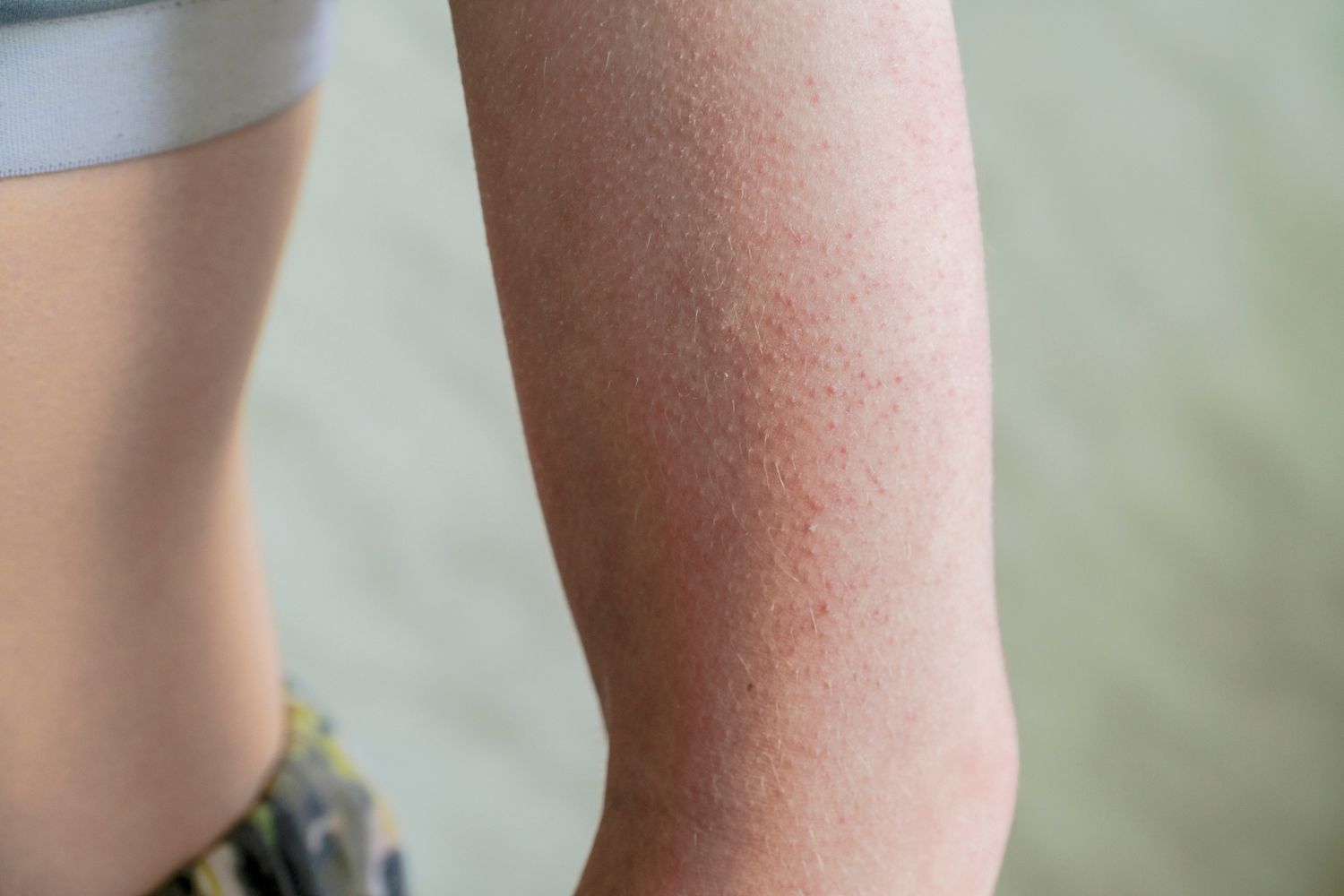
Hyperkeratinization might sound like a mouthful, but it's something many people deal with daily. Ever noticed rough patches on your skin or tiny bumps that just won't go away? That's hyperkeratinization at work. But what exactly is hyperkeratinization? In simple terms, it's when your skin produces too much keratin, a protein that helps protect your skin. This overproduction can lead to clogged pores, rough textures, and even skin conditions like keratosis pilaris or acne. Understanding the causes and effects of hyperkeratinization can help you manage and treat it better. Let's dive into 25 facts that will help you get a grip on this common skin issue.
What is Hyperkeratinization?
Hyperkeratinization refers to the excessive production of keratin, a protein that helps form the outer layer of the skin, hair, and nails. This condition can lead to various skin issues, including acne, calluses, and certain types of dermatitis. Understanding the facts about hyperkeratinization can help manage and treat these skin problems effectively.
-
Keratin Overload: Hyperkeratinization occurs when keratin-producing cells, known as keratinocytes, go into overdrive, producing more keratin than the skin needs.
-
Acne Connection: This condition is a major factor in acne development. Excess keratin can clog hair follicles, leading to the formation of comedones, commonly known as blackheads and whiteheads.
-
Genetic Factors: Genetics play a significant role. If your parents have a history of skin conditions related to hyperkeratinization, you might be more prone to developing it.
-
Psoriasis Link: Psoriasis, a chronic skin condition, is often associated with hyperkeratinization. The rapid turnover of skin cells leads to thick, scaly patches.
-
Environmental Triggers: Factors like pollution, harsh weather, and exposure to certain chemicals can exacerbate hyperkeratinization.
Symptoms and Signs
Recognizing the symptoms of hyperkeratinization can help in early diagnosis and treatment. Here are some common signs to look out for:
-
Rough Skin Texture: One of the most noticeable symptoms is a rough, bumpy texture on the skin, often felt more than seen.
-
Calluses and Corns: These thickened areas of skin, usually on the feet or hands, are a direct result of excessive keratin production.
-
Keratosis Pilaris: Often called "chicken skin," this condition causes small, rough bumps, usually on the arms, thighs, cheeks, or buttocks.
-
Discoloration: Affected areas may appear darker or lighter than the surrounding skin due to the buildup of keratin.
-
Itching and Irritation: The excess keratin can cause the skin to become itchy and irritated, leading to discomfort.
Causes and Risk Factors
Understanding what causes hyperkeratinization can help in managing the condition. Here are some key factors:
-
Hormonal Changes: Hormonal fluctuations, especially during puberty, pregnancy, or menopause, can trigger hyperkeratinization.
-
Dietary Influences: A diet high in sugar and dairy products can exacerbate the condition, while a balanced diet rich in vitamins and minerals can help manage it.
-
Stress: Chronic stress can affect your skin's health, leading to conditions like hyperkeratinization.
-
Medications: Certain medications, including corticosteroids and lithium, can contribute to excessive keratin production.
-
Underlying Health Conditions: Conditions like diabetes and obesity are linked to an increased risk of hyperkeratinization.
Treatment and Management
Managing hyperkeratinization involves a combination of lifestyle changes, skincare routines, and medical treatments. Here are some effective strategies:
-
Exfoliation: Regular exfoliation helps remove excess keratin and dead skin cells, improving skin texture.
-
Moisturization: Keeping the skin well-moisturized can prevent dryness and reduce the buildup of keratin.
-
Topical Treatments: Products containing salicylic acid, glycolic acid, or retinoids can help manage hyperkeratinization by promoting cell turnover.
-
Prescription Medications: In severe cases, dermatologists may prescribe medications like retinoids or corticosteroids to control keratin production.
-
Healthy Diet: Eating a balanced diet rich in antioxidants, vitamins, and minerals supports overall skin health.
Prevention Tips
Preventing hyperkeratinization involves adopting healthy habits and skincare practices. Here are some tips to keep your skin in check:
-
Gentle Cleansing: Use mild, non-irritating cleansers to avoid stripping the skin of its natural oils.
-
Sun Protection: Protecting your skin from UV rays can prevent damage that may trigger hyperkeratinization.
-
Hydration: Drinking plenty of water keeps your skin hydrated and helps maintain its natural barrier.
-
Avoiding Triggers: Identifying and avoiding environmental or dietary triggers can help manage the condition.
-
Regular Check-ups: Regular visits to a dermatologist can help monitor your skin's health and catch any issues early.
The Final Word on Hyperkeratinization
Hyperkeratinization, a condition where the skin produces too much keratin, can lead to various skin issues like acne, psoriasis, and calluses. Understanding the causes, such as genetics, hormonal changes, and certain skin conditions, helps in managing it effectively. Treatments range from topical creams and exfoliants to lifestyle changes like diet and stress management. Consulting a dermatologist is crucial for personalized care.
Remember, maintaining a balanced skincare routine and staying informed about your skin's needs can make a significant difference. Hyperkeratinization might sound complex, but with the right approach, it’s manageable. Keep an eye on your skin, listen to its signals, and don’t hesitate to seek professional advice when needed. Your skin will thank you for the extra care and attention.
Was this page helpful?
Our commitment to delivering trustworthy and engaging content is at the heart of what we do. Each fact on our site is contributed by real users like you, bringing a wealth of diverse insights and information. To ensure the highest standards of accuracy and reliability, our dedicated editors meticulously review each submission. This process guarantees that the facts we share are not only fascinating but also credible. Trust in our commitment to quality and authenticity as you explore and learn with us.


